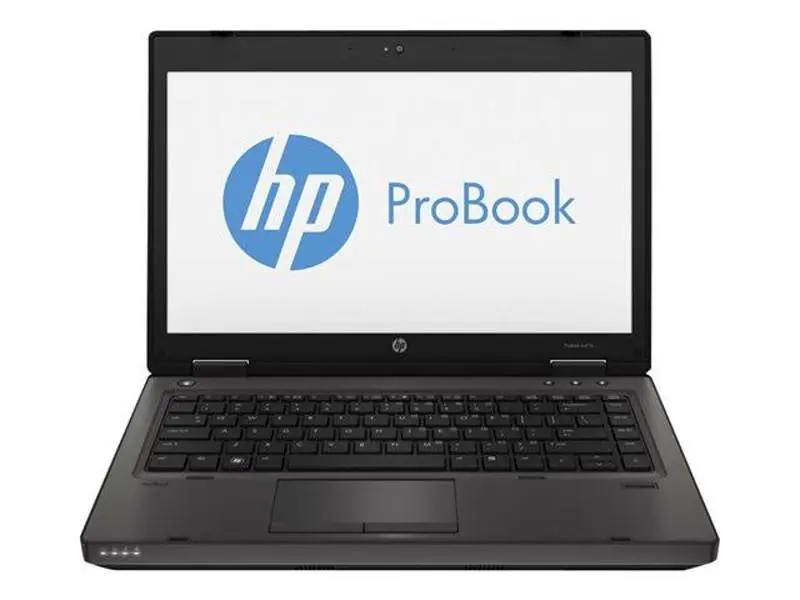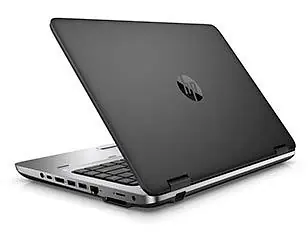HP Probook 6475B AMD A6 1.9Ghz win 7 Pro USED
₹15,999.00
zoom
HP Probook 6475B AMD A6 1.9Ghz win 7 Pro USED
₹15,999.00
DESCRIPTION
| Refurbished by the manufacturer or a certified agent. |
| - Height: 1.30 | |
| - Width: 13.30 | |
| - Length: 9.10 | |
| - Weight: 4.50 | |
| - Included: Ac Adapter, Battery | |
| - Processor Type: AMD A6-4400M | |
| - Processor Speed: 1.9Ghz | |
| - Memory RAM: 16GB | |
| - Hard Drive Capacity: 2TB HDD | |
| - Optical Drive: DVDROM | |
| - Operating System: Windows 7 Pro | |
|
- Screen Size: 14" |
Item specifics
| Condition: |
Used: An item that has been used previously.
|
Brand: | Hp |
| Hard Drive Capacity: | 2 TB HDD | Model: | probook 6475b |
| SSD Capacity: | Not Specified (Others) | Operating System: | Windows 7 pro |
| Family Line: | ProBook | Screen Size: | 14.1" |
| Type: | Notebook | Processor: | amd |
| Warranty: | Manufacturer Warranty | Processor Speed: | 2.60 GHz |
| Duration: | 6 months | Graphics Processing Type: | Integrated/On-Board Graphics |
| MPN: | Does Not Apply | Memory: | 16 GB |
| UPC: | Does not apply |
Review HP ProBook 6475b Notebook
Old-school business laptop. You are looking for a first-class office notebook? If attributes like stable, premium, typing-friendly, matte, cool, silent and money-saving are important to you, then you should keep on reading. But the main surprise of the HP ProBook 6475b lies with its display: Its color fidelity is excellent, despite a low-contrast screen. You shouldn't be too fond of stylish ultrabooks though, because the HP is far from cutting edge when it comes to weight and height.

For the original German review, see here.
The Dell Vostro, Fujitsu's S/E series, Lenovo's ThinkPad L series (L530), Asus' Pro B series and Acer's TravelMate P models as well as HP's ProBook have something in common: All of them are aimed at business customers or private users who look for a workhorse device, people who don't want to spend more than $800-1000, but at the same time don't want to miss out on essential business features such as - at least - a typing-friendly keyboard, a matte display, a multitude of ports and a stable, non-glossy case suitable for everyday use.
With its 14-inch ProBook 6475b (model C5A55EA) equipped with an AMD A6-4400M and a WXGA++ panel, HP complements its series of 13-inch (6360b), 14-inch (6470b), 15-inch (4540s, 4535s) and 17-inch (4740s) notebooks which we have already reviewed. The 6475b is a direct sibling of the Intel-based 6470b with which it shares the same barebone. Like all ProBooks, the 6475b is available in a variety (9) of configurations ranging from $800 to $1000.
We are comparing the 6475b with three of its competitors which are also aimed at business users and demanding consumers, namely the Dell Vostro 3460, Lenovo's ThinkPad L430 and Acer's TravelMate P643. Of course, these are but a small selection of all comparable laptops, as can be seen in the corresponding list below this review - which does not even include cheaper office devices with worse build quality, less ports or unsatisfying input devices. But first let's have a closer look at the 6475b.
As already mentioned, the 6475b shares a common barebone with its Intel sibling, the 6470b. Number and type of ports are the same, as are their locations. Even the interior of the device looks alike, which makes maintenance of its components a breeze.
However, the 6475b differs considerably from the larger 15-inch 6570b, which sports a completely different chassis with different port locations and an additional numpad which the 6475b does not have. Only color, material and general shape and design remain similar.
HP has chosen to simply reuse the case of the 14-inch predecessor ProBook 6465b (early 2012) - apparently, its stable, high-quality build didn't require any improvements. For a more detailed analysis of all ports, we refer to our reviews of the ProBook 6465b (AMD) and the 6470b (Intel).
The ProBook 6475b offers all the numerous connections which more demanding users have come to expect. Since the lid is attached in the conventional way, some ports are even located on the back side of the laptop. Here, one can find both the Ethernet and VGA ports. The power adapter is straight and rigid, thus making it bulkier than necessary (but this is typical for HP). One advantage of the back side ports: The sides show less clutter. We are also quite fond of the concentration of ports near the rear end of the laptop.
Like its predecessor, the right side of the P6475b offers a DisplayPort replacing the older HDMI port. With a DisplayPort cable, external screen resolutions of up to 2560x1600 pixels are possible. Nostalgia sets in when we discover the old ExpressCard54 slot next to it. Both standard interface cards and ExpressCard34 cards fit here, rendering the 15.6-inch laptop expandable.
FireWire (i.LINK) might be of more interest in typical usage scenarios. FireWire used to be a USB 2.0 competitor for external hard drives (also eSATA) and camcorders, offering higher data transfer rates. It was rendered obsolete by USB 3.0 (the ProBook 6475b has two ports), but it might be a nice extra for users with older peripheral devices.
Communication
All P6475b variants offer Wi-Fi draft-n, but some come equipped with pretty much every possible radio device. There is a Broadcom module for Bluetooth 4.0support, while the Realtek LAN adapter runs with full gigabit speed. Our model does not include an HSDPA modem (3G), although other variants do. In our test device, a free mini-PCI-Express slot with preinstalled antennas, as well as SIM card slot in the battery compartment, heavily imply a 3G version as well. An HP Connection Manager allows for different, location-sensitive Wi-Fi and Bluetooth profiles to be put in place.
Reception is excellent, not only three meters away from the router, but also in the first floor (10 m distance) and outside (15 m). It takes 40 meters for the signal quality to drop down to two bars, which is still satisfying. Even then, the connection remains uninterrupted. These values are astonishing, even more so considering that our router (Fritz!Box 7270) was set at 50% transmission power. Among the last ten devices this reviewer tested, only one - the Fujitsu Lifebook P702 with an Intel Centrino Advanced-N 6205 - was equally good concerning reception.
Security
It is possible to insert an optional SmartCard reader into the ExpressCard54 slot. SmartCards see some usage in corporate environments to allow for personalized logins. BIOS access can be locked with a password and a passive TPM 1.2 Embedded Security Chip for business usage is installed, allowing for unambiguous identification of a computer via a cryptographic key code. The keyboard is splash-proof and comes equipped with a drain in the bottom panel. All security solutions are bundled in the HP ProtectTools Security Manager.
Accessories
The HP 6475b wouldn't be a real business laptop without a matching docking solution. Both the HP 230W and the 90W docking stations (which cost around $180 and $160 respectively) fit, expanding the HP ProBook with a serial, PS2, DVI and parallel port. The Advanced Docking Station (Upgrade Bay, eSATA) is also suitable for usage with the 6475b. It costs around $280. All docking stations offer their own power supply, thereby also recharging the laptop.
The bottom panel also sports a battery port, where the travel battery pack (73 Wh, $80) can be attached as a slice beneath the base unit. This might be a recommendable addition to the P6475b, since its battery life of 4 hours (Wi-Fi usage) is rather fair to middling.
A Windows 8 Pro Recovery DVD is enclosed. This is not the case for Windows 7 Pro - with which the P6475b ships - as only a recovery partition exists. The HP laptop comes with few manuals: A Windows 8 installation guide and a setup booklet, that's it.
Maintenance
Maintenance is a breeze; the bottom panel can easily be removed by activating a simple slider mechanism. Afterwards, all internal components are accessible, including fans, CPU, RAM and the Mini PCI-Express ports (Wi-Fi, optional 3G modem). The Seagate HDD is a standard 9.5mm specimen so that all common 2.5-inch SATA SSDs and HDDs can be installed.
Warranty
HP offers 12 months of warranty for its ProBooks, however, in some countries, the laptop has to be sent in. This warranty can be extended to cover up to 3 years next-workday on-site service (Care Pack Services) for a hefty $300.
Despite its decent resolution (1280x720 pixels), the HD webcam suffers from bad image quality due to pale colors and a hit-and-miss autofocus. The Power Assistant is meant for switching between different energy profiles for different application or usage scenarios, replacing the more tedious Windows energy modes.
The keys of the 6475b offer a well-defined pressure point, generous travel as well as firm feedback. Nothing wobbles or bends when pressure is applied. We have a sweet tooth for the arrow keys, which can be accessed well without looking, even though they are not separated from the rest of the keys.
Writing maniacs are going to appreciate the slightly conic shape of the keys which guide the fingers, caressing them haptically. The Return key is a bit on the narrow side due to the neighboring Page Up and Page Down keys, but this didn't diminish our typing experience - the full-sized right Shift key is much more important in our opinion. In addition to the standard keys, there are also hardware buttons for the radio modems, speakers and the browser, which complement the function keys perfectly while being easy to reach.
Touchpad
The touchpad is positioned in a small, edged depression. The Synaptics LuxPad V7.5 (110 mm diagonally) is quite sensitive even in its edge regions, while offering an enjoyably smooth gliding experience. There is both a vertical and a horizontal scroll bar - neither of which is marked on the touchpad. One-finger scrolling is deactivated in its delivery condition.
The mouse keys are made from hard rubber, rendering them slip-proof. Travel is extraordinarily large and the keys can easily be actuated. Their feedback is great, increasing productivity far more than the usual rigid, short-winded keys of almost all consumer laptops.
The Synaptics touchpad comes equipped with a small palm sensor, deactivatingthe touchpad while the keyboard is in use. Like in all consumer laptops nowadays, this touchpad is also multitouch-enabled, thus allowing for two-finger scrolling, pinching or twisting.
The WXGA++ display of our ProBook 6475b model offers a very decent resolution of 1600x900 pixels. It provides an alternative to the HD panels (1366x768) of some low-cost variants of the P6475. The LG panel (type LP140WD1-TLD2) is matte, so that no strong reflections occur.
The brightness of the TN panel depends on the availability of an external power supply, throttling down from 205 cd/m² to 136 cd/m² while running on battery power. Brightness homogeneity levels of 77% are also disappointing - most test devices exceed 80%. However, no halos could be discerned visually near the edges.
The 6475b offers a contrast ratio of 209:1 due to a black level of 0.95 cd/m² (measured in the center). This is not much, but sill typical for its class. The competition (Vostro 3460, ThinkPad L430 and TravelMate P643) ends up with similar ratios.
|
|||||||||||||||||||||||||
Brightness Distribution: 77 %
Center on Battery: 136 cd/m²
Contrast: 209:1 (Black: 0.95 cd/m²)
"Color space" are two important words for digital artists and graphics designers which require good agreement between real-life colors and their digital substitutes. Like its competitors, the 6475b does not manage to fully cover the sRGB color space, let alone the AdobeRGB color space. However, even expensive business laptops have a hard time fulfilling these requirements, as the last two graphs show. Even Lenovo's X1 Carbon (sporting the same HD+ resolution) fails to render all of the sRGB color space, despite expanding it upwards.
Due to its matte display, outdoor usage seems viable, but the non-preventable dimming down to 136 cd/m² while on battery power destroys these hopes. Our test image below is barely visible in sunlight, even less so from the sides. The situation can be improved by plugging the laptop into an outlet, however, even then 205 cd/m² may not be enough for a pleasant day on the terrace. 250 cd/m² or more would be needed for acceptable outdoor usage.
Wide viewing angles are important, allowing the user to make out all the details on the display even from the sides or from above. Office notebooks often employ inexpensive TN panels, leading to limited viewing angles. The 6475b doesn't perform quite as bad as some of its competitors. Horizontally, the display begins to darken at around 40 degrees, while color distortions occur beyond 70 degrees.
Ve tical deviations are less benign. Colors start to invert at approximately 15 degrees, text becomes unrecognizable at 25 degrees or less. The Vostro 3460, the ThinkPad L430 and the TravelMate P643 offer the same experience concerning vertical viewing angles, but they fare worse in the horizontal direction (image stability lasting to around 45 degrees).
In the case of its 6475b model, HP employs the AMD Trinity platform (Intel is used in the 6470b). Only one of the variants, the A3Z20AV, sports an A8-4500M quad-core processor (4 x 1.9 GHz, accompanied by a Radeon HD 7640G, but without a Windows 8 license), while the other variants - one of them being our test version - come equipped with a dual-core AMD A6-4400M processor (2 x 2.7 GHz).
Only one of the two memory banks is occupied by a single 4 GB RAM module. Since Windows 7 Pro (32-bit) came preinstalled, all tests have been performed under Windows 7, despite the 6475b being shipped with a Windows 8 DVD. The graphics board of our test device is an integrated HD 7520G which snaps off 512 MB RAM.
Processor
Cinebench 11.5 does not work in a 32-bit environment, which is why we had to use the 32-bit version of the R10 Multi benchmark. Typical business laptops are equipped with an Intel Core i3 (+ 80-90%) or an i5 (+ 160-190%), rendering them much more potent than AMD's dual-core processor. Even the A8-4500M variant cannot compete with Intel's Core i platform, outperforming the A6-4400M by only 30% (this being an average taken over five test devices).
According to its fact sheet, the CPU clock speed varies between 2.7 and 3.2 GHz due to its turbo core. However, even under full load we measure only a value swaying between 2.4 and 2.9 GHz - for both cores. The clock speed decreases whenever the GPU is needed, as can also be seen in our high-temperature stress test evaluation.
Redeployment of resources is a fundamental principle of Accelerated Processing Units (APUs), distributing and allotting energy input variably between the CPU and GPU. While the Intel Core platform is capable of exhausting the maximum performance levels of both units at the same time, this cannot be done with the A6 or the A8. Only while operating on battery can the AMD APU use both CPU and GPU to the fullest (When 'Maximize Power' is chosen in the PowerPlay Battery settings), yielding similar Cinebench and 3DMark 11 scores as before.
| Cinebench R10 - Rendering Multiple CPUs 32Bit (sort by value) | |
| HP ProBook 6475b |
|
| Fujitsu Lifebook S752 |
|
| Asus B43E-VO158X |
|
| Dell Vostro 3460 |
|
| Asus Pro B43V-CU024X |
</di
|
%20(1).png)










































